“Earlier this month, I presented a talk in the Projection Design class of Wendall Harrington, a professor in the Yale School of Drama. Wendall Harrington is a pioneer in projection design (she’s been called “the godmother of all projectors” by John Simon in New York Magazine) and has been working in the field of projected media for live events since the mid 1970’s. Each year, Wendall invites artists who inspire her to speak to her class. I presented an overview the Digital Diaspora Family Reunion and Through A Lens Darkly, showing only media that could be found online. It was a pretty diverse group and I was a bit nervous as this was the first time I presented to an audience of students mostly focused on theater in general and projection design in particular. The talk went very well judging by the feedback of students, several of whom approached me afterwards to speak about their family narratives and photographic albums and the intersection with their creative work in theater, music, design. Brittany Bland was one of these students and I was struck by the story she shared about her late Dad who had been the family photographer (and a twin) and how his passing changed the family’s visual narrative. I invited Brittany to do a post for DDFR. Below are the photographs she shared with us and the written conversation between us around the images.” – Thomas Allen Harris

Brittany first row, on the left in Wendall Harrington’s class. Photo credit: Thomas Allen Harris.
Brittany Bland:
“I’m fortunate to come from a legacy of storytellers. My father and his twin brother played an essential role in my interest in photography, film, and projection. My father and uncle were our family’s storytellers. Their medium was photography, as a result almost every moment of my life has been photographed. To this day there are photo albums lining the walls of some poor storage facility back home. When I was 18 my father passed away and my uncle moved to NY to start his family. All of a sudden it there was no one left to record my family’s history, no one tell our story. I want to start a project where I continue my family’s narrative. I want to know who we’ve become without him, what we’ve gained or lost, and where we’re going. Using the photographs of my father, uncle, and extended family I hope the heal the wounds left by his passing and understand who I am and what it means to part of this family. I plan on sharing this work with Thomas Allen Harris through Digital Diaspora, whose work captures the importance of preserving and communicating our experiences.”
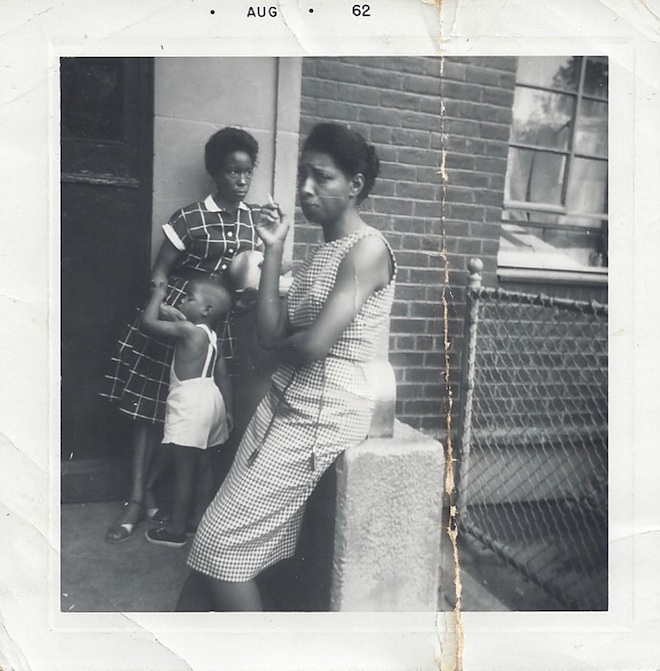
DDFR
Thomas Allen Harris: Your grandmother looks skeptical about having her photo taken. Any idea why?
Brittany Bland: I’m actually not sure. From what I’m told grandma didn’t play no games. She had several strokes before her passing and still managed to whip a house full of boys into shape. Underneath that stern exterior must have been so much love. I know this because she passed it on to her sons, who in turn gave it to me.
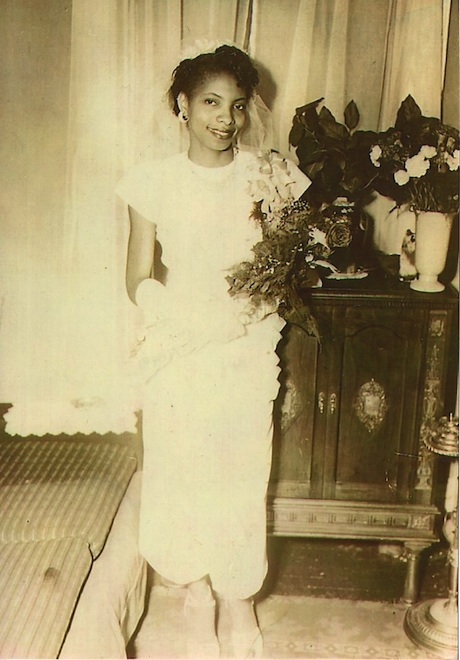
DDFR
TAH: Where was this photo taken? Why did you select it for this piece?
BB: There’s some controversy over my last name. Marion was married at the time she had my father and uncle. Her husband left her, but didn’t apply for a legal divorce. He just up and disappeared one day. He eventually remarried somehow and started another family but that’s all a mystery to us. Marion met Robert Meggett and gave birth to my father and uncle but kept the Bland family name because she technically was still married and her new relationship with Mr. Meggett would have been seen as scandalous. This picture reminds me of that conflict, of which I was unaware of until a few months ago.
DDFR
DDFR
TAH: I love this photo (below) with the bow ties!
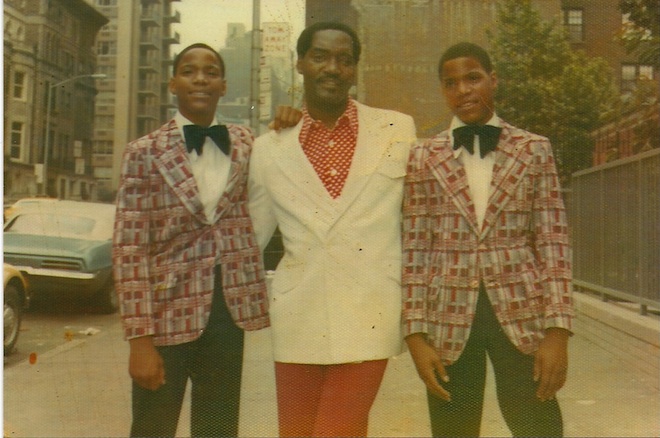
BB: Teenage twins Alfred (left) & Albert my father (right), Robert Lee Meggett their father (center).
TAH: Why was this (below) important to show? Where did you find it?
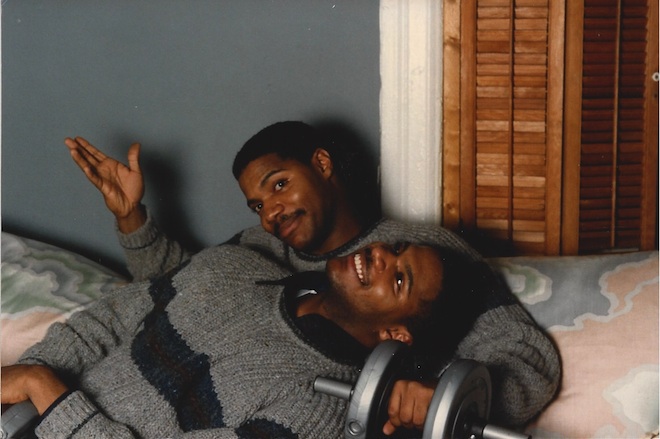
BB: I found this photo in my Uncle’s apartment in Harlem. It’s important to me because it shows how much they cared for each other. On one hand they’re showing that they’re strong men but on the other how honest, loving, and affectionate people they are. I think the level of comfort and love they had is self-evident here.
TAH: How do you feel when you look at this photo (below)?
DDFR
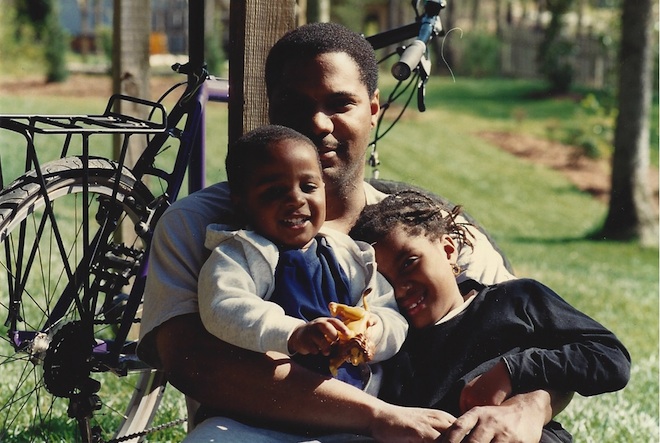
BB: This photo contains so much joy. It’s the ideal time period for my childhood. I’m still a kid with both parents, no worries, safe, & loved. It also reminds me of change. My father had to throw away that bike. He was hit by a car on it and the bike frame was destroyed (he was fine). I also look at this beautiful photo and want to see my father, but it’s my uncle instead because my dad was always behind the camera.
DDFR
TAH: What comes to mind in terms of your identity then vs. now when you look at this photo? Do you still wear your hair?
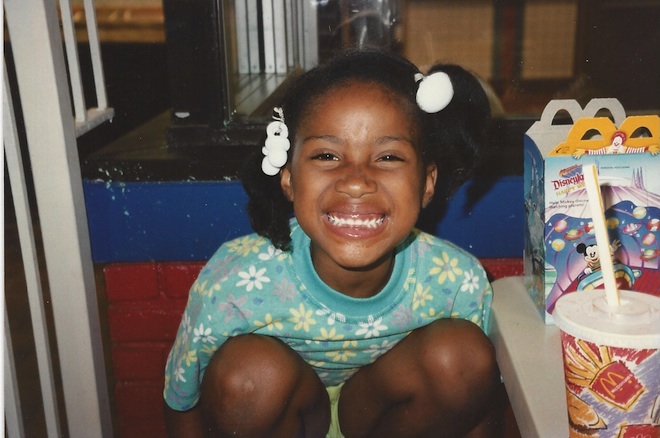
BB: This photo reminds me of two people. The person I was and the person I am now. Before my father passed, I was part of a family. The state of that family was fixed and unquestionable. After his passing, it seemed as if the whole world was in flux. My world spun and shook until a hole formed in my heart. The hole used to be massive. It was so large I fell into it. The child that fell into that hole is not the adult that emerged from it. It’s almost as if my naivety was a weight, and I had to shed it in order to emerge from that abyss. This new person is stronger. She knows the value of family and wants to be a positive presence in their lives. She is happy for the time she had with her father and never takes her time for granted.
That hairstyle was entirely my mother’s doing. I actually hate fussing with my hair. I sport an unkempt afro now.
No comments yet.